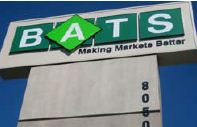If a stock exchange has a trading outage and no one stops trading, is it really an outage?
Maybe not. Yesterday morning, one of the trading systems for BATS Global Market’s three stock exchanges experienced a technical outage shortly after the start of the trading day. BATS officials moved operations to a backup facility in Chicago and warned traders and other exchanges to “send business elsewhere while staff worked to fix the problem,” according to the Wall Street Journal. At around 12:44pm, the bourse’s BYX exchange was up and running.

Although this is the second major technology glitch for BATS — its larger BZX exchange suffered an outage in early August — it is not alone in the field of exchange technology outages. Nasdaq suffered a three-hour outage in mid-August and NYSE Euronext saw its datafeed suffer performance issues as well. Very few exchanges seem to be immune these days.
[BATS CEO talks with Traders Magazine about its merger with Direct Edge.]
As these technologies slow-downs are becoming almost expected occurrences, they don’t appear to phase the people who are doing the actual trading. According to the Wall Street Journal, the temporary outage of the BATS exchange brought a specific response from traders: Ho-hum.
The Journal writes:
“While the smaller BATS exchange was down, stocks continued to trade across the other 12 U.S. stock exchanges and private, electronic platforms. A single exchange going down typically causes few ripples for brokers, who can easily adjust their trading systems to send orders elsewhere.
The series of data-feed failures over the past month represented a bigger headache, however, because traders need the benchmark pricing feeds to ensure that trades are being carried out at the best price available nationally.”
Perhaps one of the positive side benefits of Regulation NMS, which pushed trading firms to find the best possible price for a security, has come to fruition. In the days of multiple global exchanges with high-speed connections, an unintentional failover system, has emerged for traders to move to when one exchange is down for the count. So long as the datafeeds from those exchanges are up and running, traders can change course without breaking a sweat.
In other words, if NYSE goes down we’ll always have London, Toronto or Philly.




